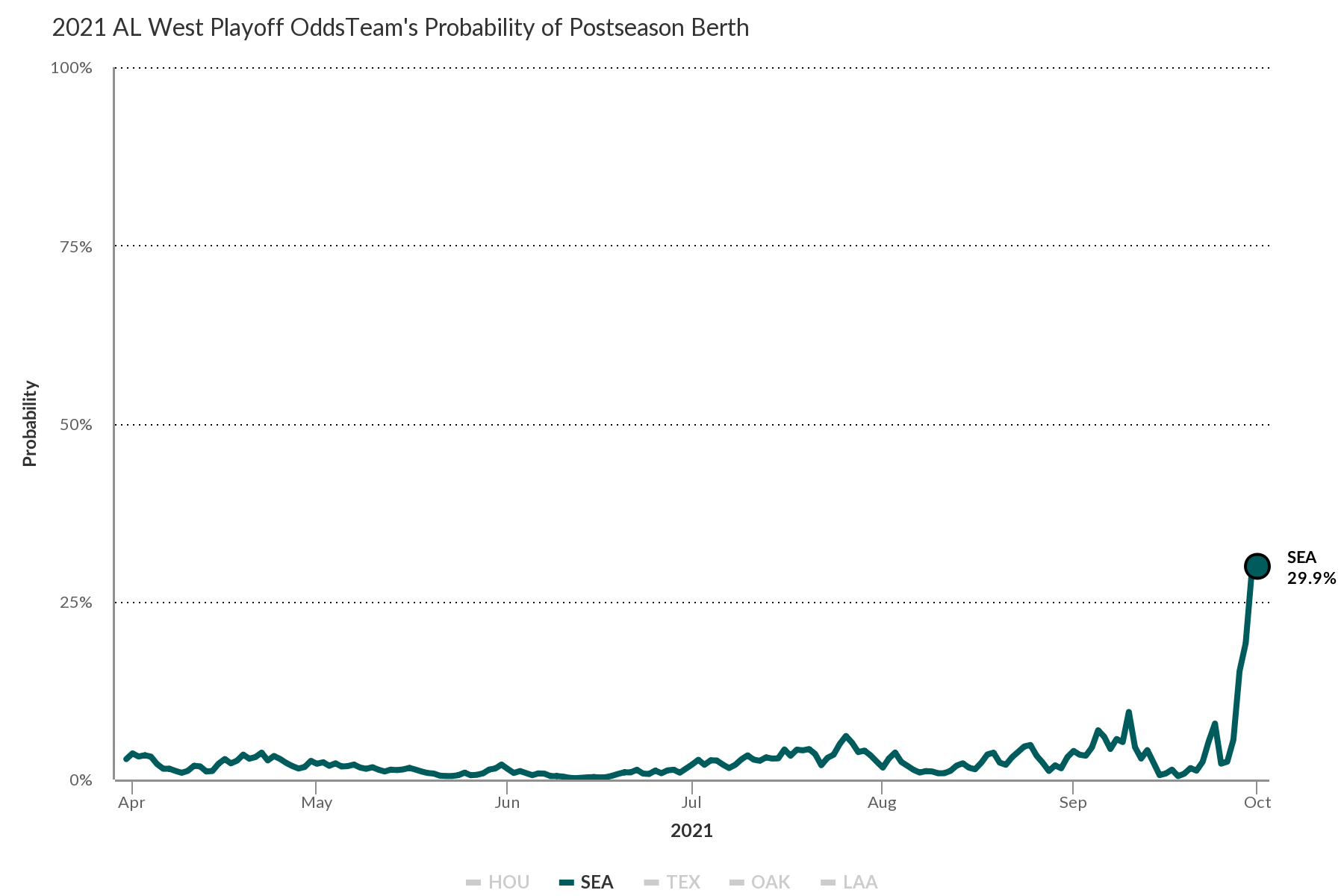Team Entropy 2021: Dial M for Mariners
This is the fifth installment of this year’s Team Entropy series, my recurring look not only at the races for the remaining playoff spots but the potential for end-of-season chaos in the form of down-to-the-wire suspense and even tiebreakers. Ideally, we want more ties than the men’s department at Macy’s. If you’re new to this, please read the introduction here.
The Mariners haven’t reached the postseason since 2001, and all season long, our Playoff Odds have strongly suggested that their drought — the majors’ longest active one — will continue. But as we head into the final weekend of the 2021 season, they’re on a 10-1 tear that has interjected them right into the thick of an American League Wild Card race with a decided East Coast bias. With the Yankees sweeping the Red Sox in Boston and then taking two out of three from the Blue Jays in Toronto while the Red Sox somehow dropped two out of three to the Orioles in Baltimore, we now have four teams separated by three games from top to bottom, with just three to play for each:
| Team | W | L | Win% | GB |
|---|---|---|---|---|
| Yankees | 91 | 68 | .572 | +2 |
| Red Sox | 89 | 70 | .560 | — |
| Mariners | 89 | 70 | .560 | — |
| Blue Jays | 88 | 71 | .553 | 1 |
This is not a drill! I’ll get to the mechanics of how this will be sorted out soon enough, but first, I’m taking the opportunity to spotlight the Mariners’ unlikely run and the trends they’re up against. This isn’t a dive into individual performances; elsewhere on FanGraphs today, Jake Mailhot has a closer look at what’s fueled their September run. Here I’m looking at the bigger picture. But first, an illustration of the Mariners’ Playoff Odds over the course of the season:

It’s been awhile since the Mariners were anywhere close to this position. While they went 89-73 just three years ago before slipping below .500 in both 2019 (68-94) and ’20 (27-33), that ’18 squad fell eight games short in the AL Wild Card race and finished 14 games behind the Astros in the AL West race. They did finish three games back in the AL Wild Card race in 2016, going 86-76 while both the Orioles and Blue Jays went 89-73, but they were a distant nine games behind the Rangers in the AL West. Not since 2003, when they went 93-69 in Lou Piniella’s final year at the helm, have they come as close by both routes to the postseason; that year, they finished three games behind the A’s in the division race and two behind the Red Sox in the AL Wild Card. And not since that 2001 team set a modern record with 116 wins have they qualified for the playoffs. Read the rest of this entry »
